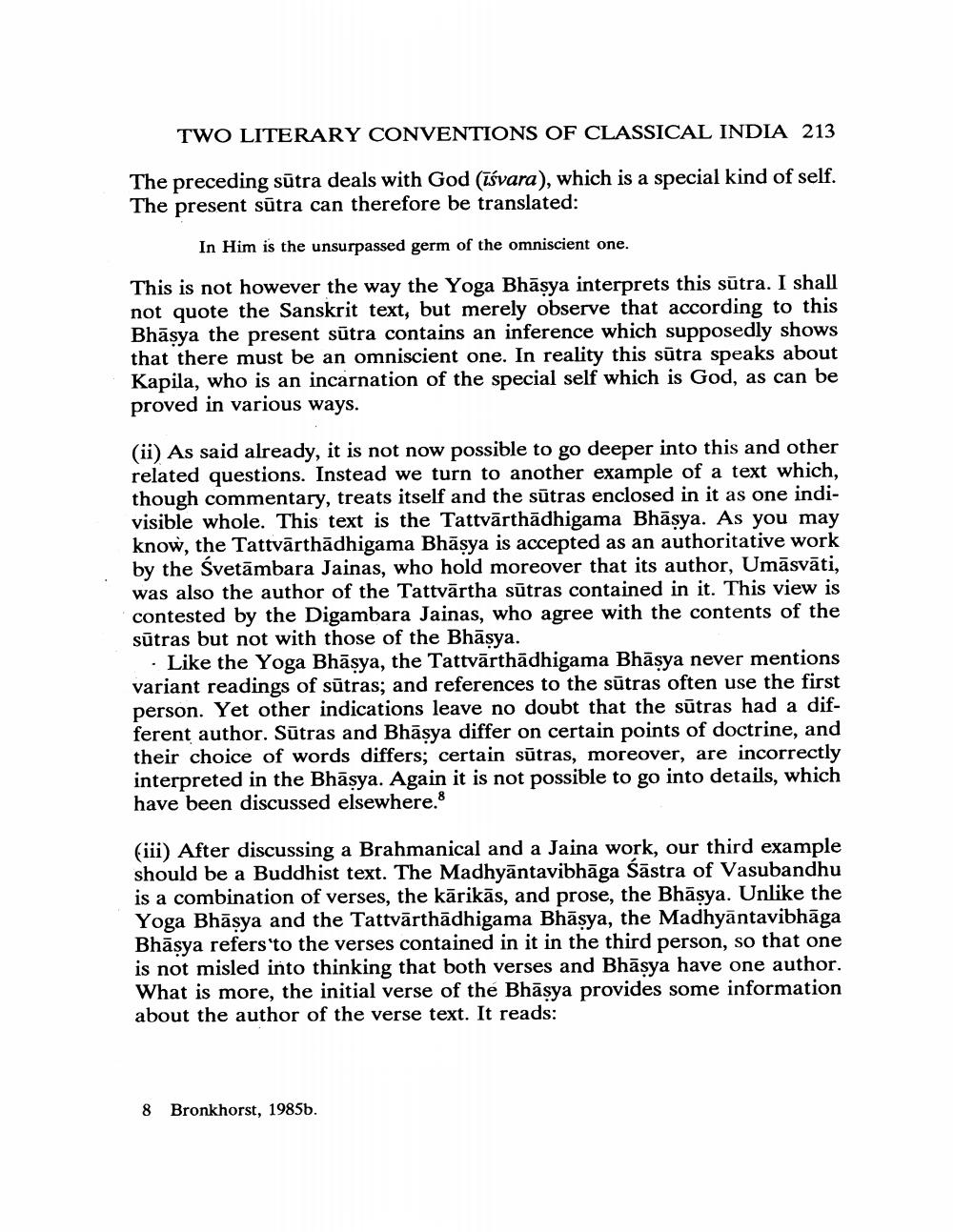Book Title: Two Literary Conventions Of Classical India Author(s): Johannes Bronkhorst Publisher: Johannes Bronkhorst View full book textPage 4
________________ TWO LITERARY CONVENTIONS OF CLASSICAL INDIA 213 The preceding sūtra deals with God (īśvara), which is a special kind of self. The present sūtra can therefore be translated: In Him is the unsurpassed germ of the omniscient one. This is not however the way the Yoga Bhāsya interprets this sūtra. I shall not quote the Sanskrit text, but merely observe that according to this Bhāsya the present sūtra contains an inference which supposedly shows that there must be an omniscient one. In reality this sūtra speaks about Kapila, who is an incarnation of the special self which is God, as can be proved in various ways. (ii) As said already, it is not now possible to go deeper into this and other related questions. Instead we turn to another example of a text which, though commentary, treats itself and the sūtras enclosed in it as one indivisible whole. This text is the Tattvārthādhigama Bhāsya. As you may know, the Tattvārthādhigama Bhāsya is accepted as an authoritative work by the Svetāmbara Jainas, who hold moreover that its author, Umāsvāti, was also the author of the Tattvārtha sūtras contained in it. This view is contested by the Digambara Jainas, who agree with the contents of the sūtras but not with those of the Bhāsya. · Like the Yoga Bhāsya, the Tattvārthādhigama Bhāsya never mentions variant readings of sūtras; and references to the sūtras often use the first person. Yet other indications leave no doubt that the sūtras had a different author. Sūtras and Bhāsya differ on certain points of doctrine, and their choice of words differs; certain sūtras, moreover, are incorrectly interpreted in the Bhāsya. Again it is not possible to go into details, which have been discussed elsewhere.8 (iii) After discussing a Brahmanical and a Jaina work, our third example should be a Buddhist text. The Madhyāntavibhāga Šāstra of Vasubandhu is a combination of verses, the kārikās, and prose, the Bhāsya. Unlike the Yoga Bhāsya and the Tattvārthadhigama Bhāsya, the Madhyāntavibhāga Bhāsya refers to the verses contained in it in the third person, so that one is not misled into thinking that both verses and Bhāsya have one author. What is more, the initial verse of the Bhāsya provides some information about the author of the verse text. It reads: 8 Bronkhorst, 1985b.Page Navigation
1 2 3 4 5 6 7 8 9 10 11 12 13 14 15 16 17 18
